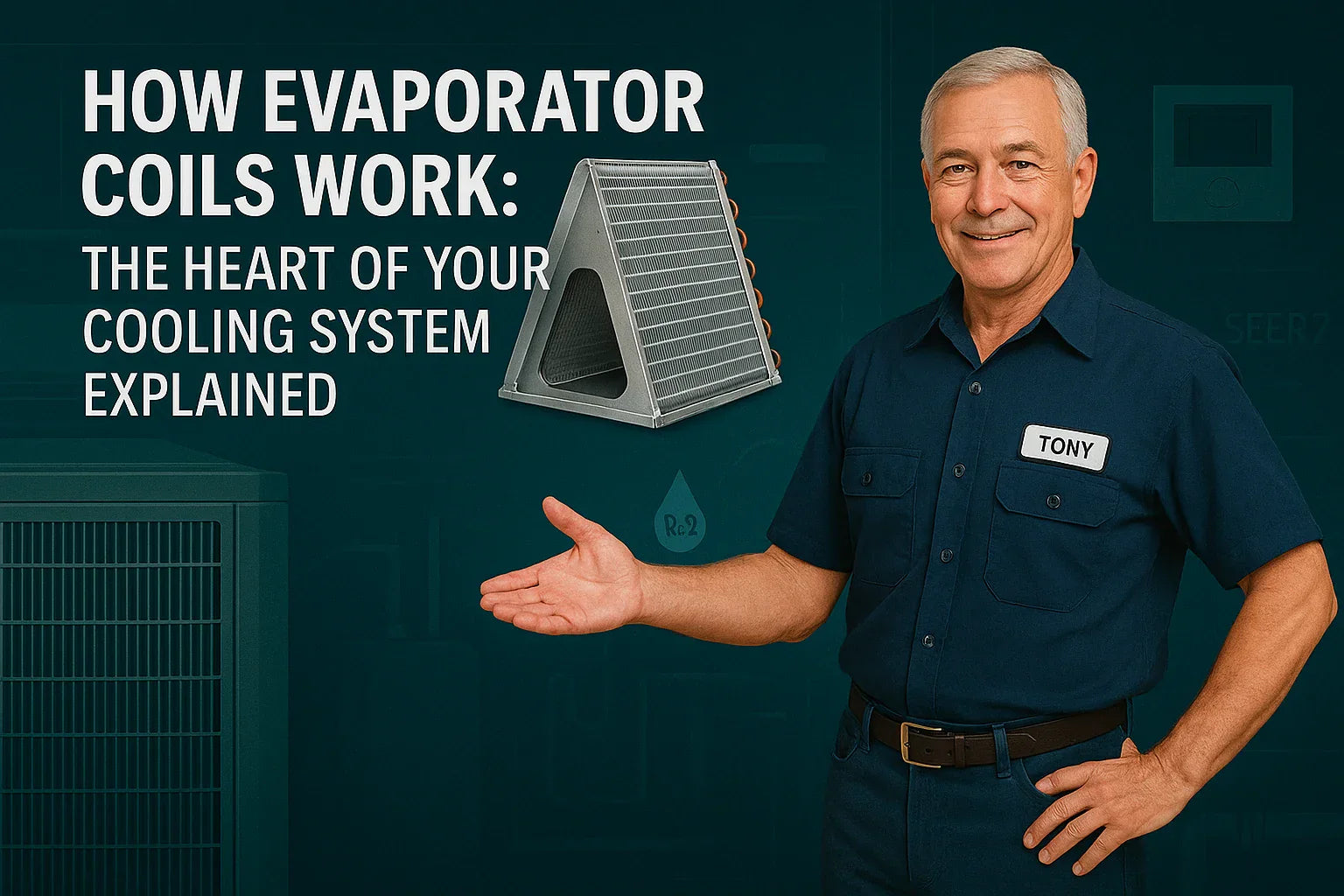Introduction: The Hidden Hero of Your HVAC
When homeowners think about their air conditioning system, they usually picture the outdoor condenser unit or the thermostat inside the house. Rarely does the evaporator coil cross anyone's mind—yet this unsung hero is at the very core of your home’s cooling performance. Without it, your system couldn’t remove heat from your indoor air and deliver the comfort you expect on those sweltering summer days.
In this comprehensive guide, we’ll walk through everything you need to know about evaporator coils: how they work, why they matter, and how to care for them so your HVAC system stays efficient for years.
Understanding the Basics: What Is an Evaporator Coil?
At its simplest, an evaporator coil is a series of metal tubes and fins located inside your home’s air handler or furnace. The coil holds cold refrigerant, which absorbs heat from the air blown over it by your blower fan. This cooled air is then circulated back into your living spaces, keeping you comfortable.
Icon: Simplified diagram of an air handler with labeled evaporator coil inside.
Most evaporator coils are made of copper, aluminum, or steel due to their excellent heat transfer properties. The design maximizes surface area to ensure maximum contact with warm indoor air.
How Does an Evaporator Coil Actually Work?
To understand how an evaporator coil works, it helps to see it as part of a larger system known as the refrigeration cycle:
-
Compression: The refrigerant gas is compressed in the outdoor condenser unit, raising its temperature and pressure.
-
Condensation: The hot gas travels through the outdoor condenser coil, where a fan blows air over it, releasing heat and converting the gas into a liquid.
-
Expansion: The high-pressure liquid refrigerant flows through an expansion valve inside your home, dropping its pressure and temperature significantly.
-
Evaporation: The now-cold refrigerant enters the evaporator coil. As warm indoor air blows across the coil, the refrigerant absorbs heat, evaporates back into gas, and cools the air.
-
Repeat: The cycle repeats, maintaining a consistent, comfortable indoor temperature.
Types of Evaporator Coils
Not all evaporator coils are the same. Depending on your system and home setup, you may encounter different designs:
1. Cased vs. Uncased Coils
-
Cased: Enclosed in a protective housing; easier for professional installation.
-
Uncased: Open frame; allows for more customized installations but requires more skill to install.
2. A-Coil (Most Common)
-
Shaped like a capital 'A'; efficient design for air flow.
3. N-Coil
-
Shaped like the letter 'N'; slightly more compact, offers high efficiency.
4. Slab Coil
-
Flat design; ideal for tight spaces or horizontal installations.
Why Evaporator Coils Are So Important
-
Energy Efficiency: An efficient coil directly translates to lower energy bills.
-
Humidity Control: As the coil cools the air, it also condenses moisture, helping maintain indoor humidity levels.
-
System Longevity: A clean, functioning coil prevents strain on your compressor and blower motor.
-
Comfort: Even cooling distribution throughout your home relies on a properly functioning coil.
U.S. Department of Energy - Air Conditioning
Common Problems with Evaporator Coils
Understanding potential issues can help you identify problems early:
1. Frozen Coils
-
Caused by restricted airflow or low refrigerant levels.
-
Signs: Ice buildup, reduced cooling, increased energy usage.
2. Dirty Coils
-
Dust and debris reduce heat exchange efficiency.
-
Preventive cleaning is essential.
3. Corrosion and Leaks
-
Over time, moisture can lead to corrosion and refrigerant leaks.
-
Requires professional inspection and repair.
Energy Star - HVAC Maintenance
How to Maintain Your Evaporator Coil
Regular Maintenance Tasks:
-
Inspect Air Filters: Replace every 1-3 months.
-
Clean Coils: Use a coil cleaning solution or hire a professional.
-
Check Refrigerant Levels: Ensure refrigerant is properly charged.
-
Inspect Drain Lines: Prevent clogs that cause water damage.
Professional Maintenance:
-
Annual professional inspections are recommended.
HVAC.com - Evaporator Coil Cleaning
When Should You Replace Your Evaporator Coil?
-
Severe corrosion or leaks
-
Repeated refrigerant issues
-
System age (10-15 years typical lifespan)
-
Upgrading HVAC system for improved efficiency
Sometimes replacing the entire system is more cost-effective than replacing just the coil, especially if your system uses older refrigerants like R-22.
Consumer Reports - HVAC System Replacement Guide
Compatibility with Refrigerants: R-410A vs. R-32
As refrigerant standards evolve, make sure your evaporator coil is compatible with your refrigerant type:
-
R-410A: Common in most systems built after 2010.
-
R-32: Becoming more popular due to environmental benefits.
Incompatible coils can lead to system inefficiency or failure.
Cost Considerations
Average Costs (2025 Estimates):
-
Evaporator Coil Only: $500 - $1,500 (depending on size, brand, and type)
-
Professional Installation: $700 - $2,000
Total replacement costs vary widely based on system type, location, and labor rates.
HomeAdvisor - HVAC Repair Costs
Tony's Take: What Every Homeowner Should Remember
"If you take care of your evaporator coil, it’ll take care of you. Schedule annual maintenance, replace filters regularly, and act quickly if you notice any cooling problems. A little attention now can save you a big headache (and wallet hit) later."
Conclusion: Your Cooling Comfort Depends on This Unsung Component
Your evaporator coil may be hidden away, but it plays one of the most crucial roles in your home comfort system. Understanding how it works, recognizing signs of trouble, and keeping up with regular maintenance will ensure your system runs efficiently, keeps your home cool, and prevents expensive breakdowns.
When it comes time for replacement or upgrade, working with reputable suppliers like The Furnace Outlet can make the process far less stressful and more affordable.
In the next article we will know about: Signs Your Evaporator Coil Is Failing (And What To Do About It)







